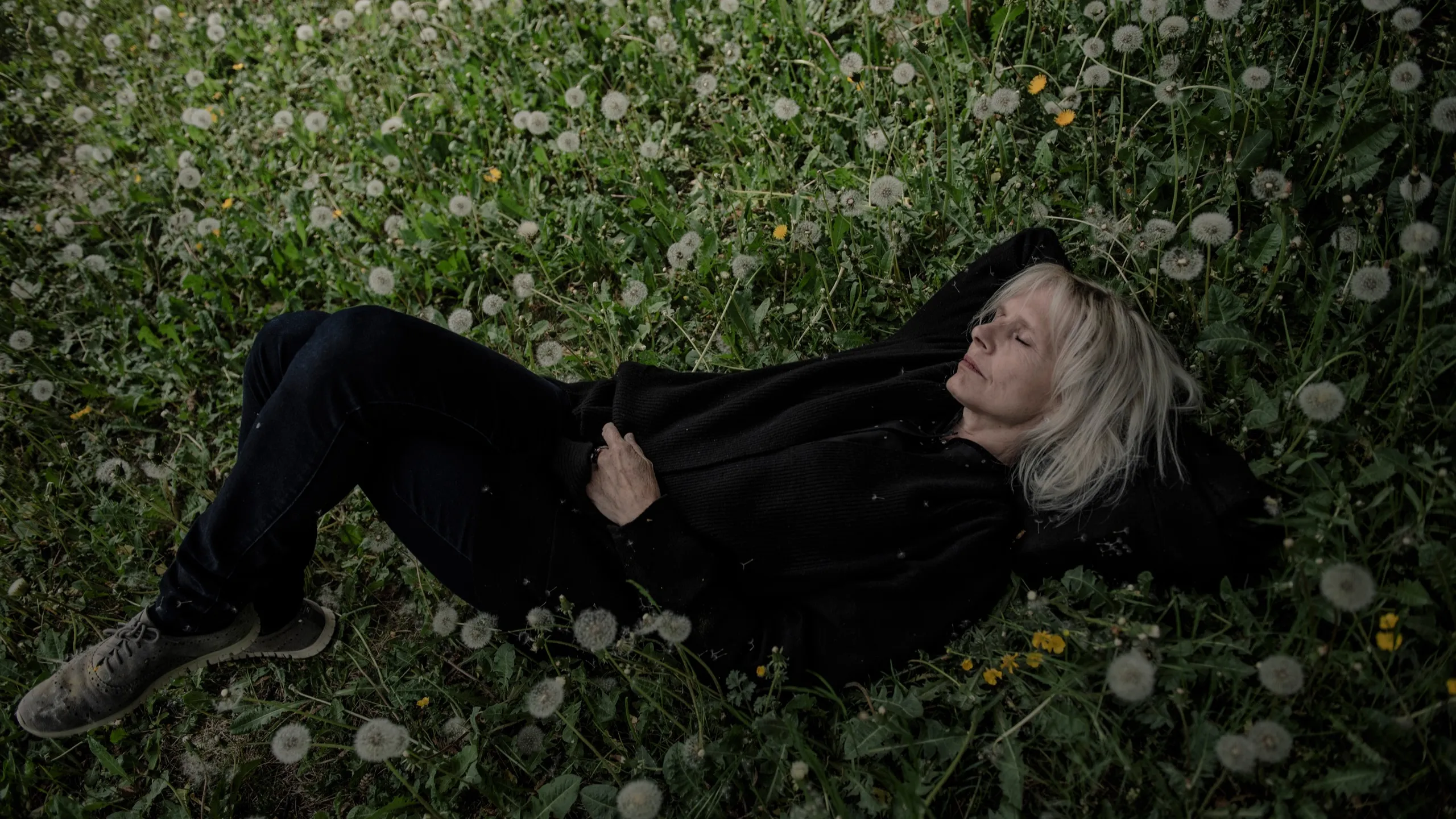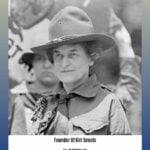This chilling tale unveils the horrors that unfolded within the walls of the “Yellow House,” where a young girl named Evy Mages suffered through psychological abuse and medical experimentation. Her story serves as a haunting reminder of the vulnerability of children and the potential for abuse within systems meant to protect them.
A Child’s Nightmare: Evy Mages’ Story
Imagine being eight years old, shuffled between unfamiliar homes, longing for stability and care. This was Evy Mages’ reality when she arrived at the Sonnenstrasse villa in Innsbruck, Austria. From the outside, it might have seemed like a safe haven, a place of healing. However, this “therapeutic home” held a dark secret, one that would scar Evy for a lifetime.
The woman in charge, Dr. Maria Nowak-Vogl, was far from the nurturing caregiver one might expect. Driven by a disturbing desire to control children’s behavior, particularly their sexuality, Dr. Nowak-Vogl employed cruel and harmful methods. Evy, along with other children at the villa, endured things no child should ever experience.
One of Dr. Nowak-Vogl’s fixations was preventing what she perceived as inappropriate behavior. Evy recounts being forced to sleep with her arms tied down, a misguided attempt to control her natural development.
But Dr. Nowak-Vogl’s disturbing practices didn’t end there. She used a drug called epiphysan on the children, a substance intended for use in livestock to regulate reproductive cycles. Epiphysan, derived from animal pineal glands, was believed to suppress sexual urges. Dr. Nowak-Vogl’s use of this drug on vulnerable children was not only medically unethical but incredibly damaging, leaving lasting psychological scars.
For years, Evy carried the weight of her experiences at the Sonnenstrasse villa, the trauma buried deep within her. Then, in 2021, fragments of memories began to resurface, sending her on a quest to uncover the truth about her past. Using the internet, she connected with journalist Margaret Talbot, and together, they brought the atrocities committed by Dr. Nowak-Vogl to light.
Evy’s bravery in sharing her story gave a voice to other survivors, who were finally able to break their silence about the abuse they suffered within those walls. Sadly, the Sonnenstrasse villa wasn’t an isolated incident. Their investigation uncovered a network of eight similar institutions operating in post-war Austria. This suggests that the abuse was systemic, a failure of the system designed to protect children.
The fact that Dr. Nowak-Vogl received her training during the Nazi era raises unsettling questions about the influence of that dark period and its potential impact on her methods. Evy Mages’ story is a chilling reminder of the abuse that can fester in the shadows, hidden behind closed doors. It underscores the importance of accountability, especially within institutions that wield power over the vulnerable. Her courage in speaking out ensures that this dark chapter of history is not forgotten and serves as a catalyst for change, demanding a system that truly safeguards children.
Unmasking the Horror: What Happened at the Innsbruck Child Experiment?
The seemingly ordinary Sonnenstrasse Villa in Innsbruck, Austria, held a dark secret. From the mid-1950s to the late 1980s, it operated as a psychiatric facility. However, instead of healing, it became a stage for horrifying child experiments orchestrated by Dr. Maria Nowak-Vogl, a psychologist trained during the chilling era of the Nazi regime.
Nowak-Vogl was fixated on controlling children’s behavior, particularly their sexuality, which she deemed problematic. Children under her care wouldn’t be met with understanding or compassion, but with a chilling regime designed to suppress any perceived “undesirable” urges.
One of the most disturbing aspects of Nowak-Vogl’s approach was her use of epiphysan. This hormone, typically used in livestock, was injected into children with the misguided belief that it could curb their sexual development.
Physical punishment, often brutal and unwarranted, was commonplace. Children were also subjected to prolonged periods of isolation, cut off from any semblance of comfort or human connection. Every aspect of their existence, even their bodily functions, was scrutinized and controlled.
For years, the suffering endured within the walls of Sonnenstrasse Villa remained hidden. But the silence was finally broken thanks to the incredible bravery of survivors like Evy Mages. Her testimony provided a harrowing glimpse into the abuse inflicted on her and other innocent children, prompting investigations and igniting a demand for justice.
The exposure of the Innsbruck child experiment sent shockwaves through Austria and beyond. It serves as a stark reminder of the ethical lines that can be crossed in the name of science, especially when fueled by distorted ideologies. While the investigation is ongoing, Evy’s courage has ignited a flicker of hope – a hope that those responsible will be held accountable, and that the voices of the victims will finally be heard.
The Doctor Behind the Experiments: Who Was Maria Nowak-Vogl?
From the 1950s to the 1980s, the Sonnenstrasse villa in Innsbruck, Austria, became the setting for deeply disturbing experiments conducted on children by a psychiatrist named Dr. Maria Nowak-Vogl.
Dr. Nowak-Vogl ran the villa as a facility for children considered “difficult” by their families or authorities. However, her methods for “treating” these children were far from therapeutic. In reality, she was conducting unethical experiments driven by a troubling fixation on suppressing children’s natural sexual development. Dr. Nowak-Vogl believed that by eliminating their sexual urges, children would become more manageable and conform to societal expectations.
To achieve this, she subjected thousands of children to injections of epiphysan, a drug primarily intended for sterilizing animals, not for use in humans. It’s important to remember that medical ethics were very different back then, and the long-term effects of medications weren’t always fully understood. This is not to excuse her actions, but to provide some context.
Adding to the unsettling nature of her practices, Dr. Nowak-Vogl’s approach was heavily influenced by her training during the Nazi era. This period saw a dark turn in psychiatry, marked by authoritarian and abusive practices. Many of the methods Dr. Nowak-Vogl employed – like restraining children’s movements to prevent any form of self-stimulation and subjecting them to constant, oppressive observation – were chillingly reminiscent of the control tactics used during the Nazi regime.
It’s estimated that around 4,000 children endured her so-called “treatments” within the walls of the Sonnenstrasse villa. The impact on these children was devastating and long-lasting. Many survivors, now adults, still carry the emotional scars and physical health issues caused by their time at the villa. They grapple with feelings of betrayal, violation, and the lingering trauma of their experiences.
The most disheartening aspect of this story is that Dr. Nowak-Vogl was never held accountable for the suffering she inflicted. She passed away in 1998, before any formal charges could be brought against her. However, her legacy serves as a stark reminder of the importance of medical ethics, the need for scientific rigor, and the absolute necessity of protecting children from any form of exploitation. The stories of the Sonnenstrasse villa survivors stand as powerful testimonies to the resilience of the human spirit while demanding that such atrocities never happen again.
Key Points:
- Evy Mages endured severe abuse at the Sonnenstrasse villa, a “therapeutic home” in Austria.
- Dr. Maria Nowak-Vogl, the home’s director, enforced cruel and harmful disciplinary methods, including tying children’s arms down to suppress their natural development.
- Nowak-Vogl administered epiphysan, a drug intended for livestock, to children to suppress their sexual urges.
- Evy’s traumatic memories resurfaced in 2021, leading her to uncover the truth about her past and connect with other survivors.
- The Sonnenstrasse villa was part of a network of eight similar institutions in post-war Austria, suggesting systemic abuse.
- Nowak-Vogl’s training during the Nazi era may have influenced her methods, raising concerns about the lasting impact of that period.
- Evy Mages’ bravery in sharing her story highlights the importance of accountability and serves as a reminder of the prevalence of abuse in vulnerable settings.
- Her courage has sparked change and demands a system that effectively protects children.
Get a thrilling read about one of the greatest Philadelphia Eagles players in Chuck Bednarik history.
Explore a nuclear deterrent that played a crucial role during the Cold War, Thomas the Thermonuclear Bomb.
Discover the inspiring journey of a young girl who courageously desegregated an all-white school in Ruby Bridges Timeline.
- Unlock Water’s Symbolism: A Cross-Cultural Exploration - April 20, 2025
- Identify Black and White Snakes: Venomous or Harmless? - April 20, 2025
- Unlocking Potential: Origins High School’s NYC Story - April 20, 2025















